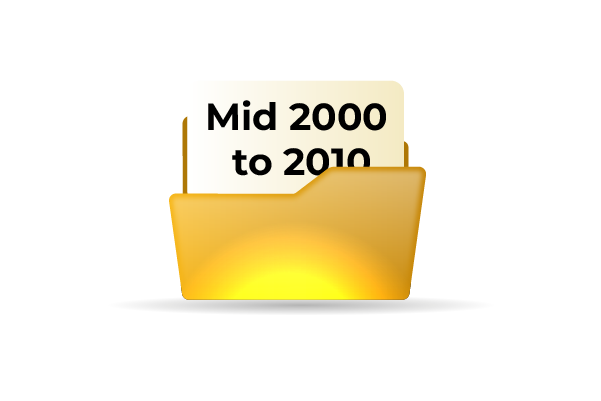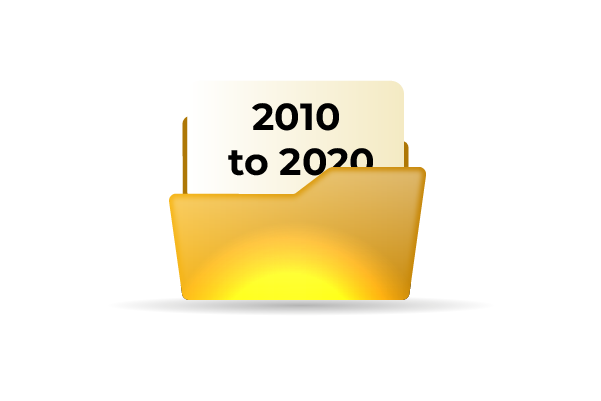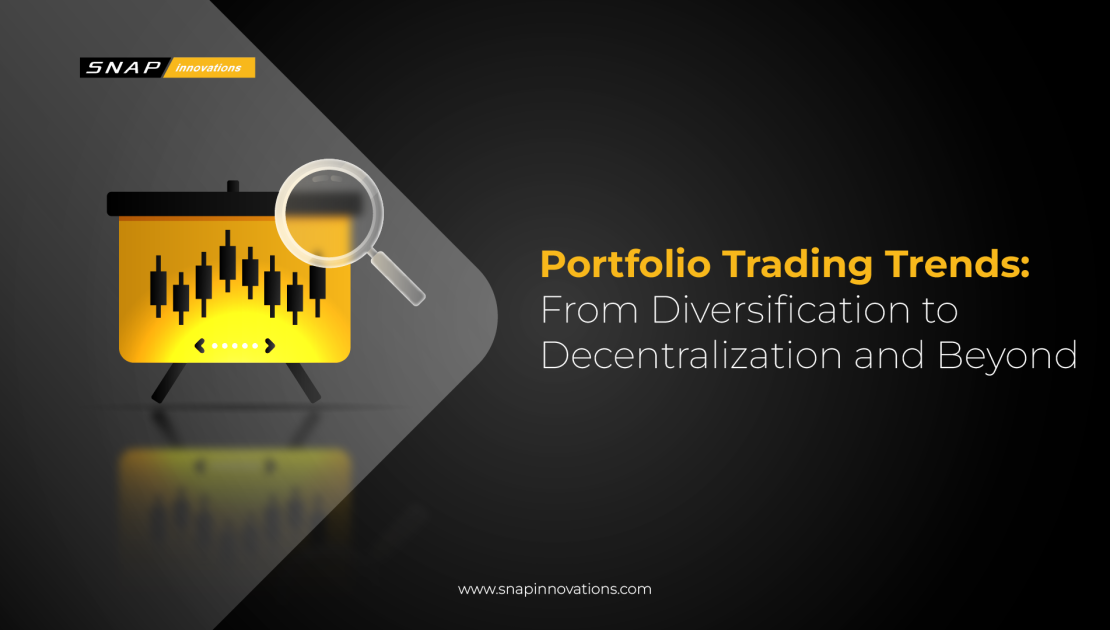The landscape of portfolio trading has undergone a remarkable transformation since the turn of the millennium, evolving with advances in technology, shifts in global economic conditions, and changing investor preferences. From the early days of diversification and traditional asset allocation to the current era’s emphasis on personalization, sustainability, and technological integration, the strategies employed by traders and investors have become increasingly sophisticated and varied.
This article aims to explore the significant trends in portfolio trading from 2000 to the present, highlighting how innovations such as algorithmic trading, artificial intelligence (AI), and big data analytics have reshaped the investment world. By tracing these developments, we can gain insights into the forces driving the future of portfolio management and prepare for the next wave of investment strategies that will define the coming decades.
Early 2000s Trading Trends
 At the dawn of the 21st century, the investment world was characterized by traditional strategies that emphasized diversification and asset allocation as primary means to manage risk and achieve returns. The dot-com bubble’s burst in the early 2000s and subsequent market volatility underscored the importance of these strategies, leading investors to scrutinize their portfolios with an eye towards spreading risk across various asset classes including stocks, bonds, and real estate.
At the dawn of the 21st century, the investment world was characterized by traditional strategies that emphasized diversification and asset allocation as primary means to manage risk and achieve returns. The dot-com bubble’s burst in the early 2000s and subsequent market volatility underscored the importance of these strategies, leading investors to scrutinize their portfolios with an eye towards spreading risk across various asset classes including stocks, bonds, and real estate.
Diversification and Asset Allocation
The principle of diversification was paramount, with the adage “don’t put all your eggs in one basket” taking on renewed significance in the wake of the dot-com crash.
Asset allocation strategies were largely guided by historical performance and the traditional 60/40 split between stocks and bonds was a common rule of thumb for many investors.
Impact of Technology
The early 2000s also saw the beginning of the technology’s influence on trading with the proliferation of online trading platforms. This democratized access to the markets, allowing retail investors to execute trades with speed and efficiency previously reserved for institutional traders.
Read More: The Power of Algorithmic Trading Backtesting
Despite this technological advancement, the strategies employed remained relatively conservative, with a strong emphasis on fundamental analysis and long-term investment horizons.
Key Market Events
The dot-com bubble burst and the subsequent market downturn at the beginning of the decade had a profound impact on trading strategies, causing investors to become more risk-averse.
The September 11 attacks in 2001 and the ensuing economic uncertainty further influenced trading trends, leading to increased market volatility and a focus on safe-haven assets like gold and government bonds.
These early years of the 21st century laid the groundwork for the evolution of portfolio trading strategies. They highlighted the need for a disciplined approach to investment, underlining the importance of diversification and asset allocation in managing risk. However, the seeds of change were already being sown, with technology poised to revolutionize trading strategies in ways that were only beginning to be understood.
Mid-2000s to 2010 – The Rise of Algorithmic Trading
 The period from the mid-2000s to 2010 is notable for the significant impact of technological advancements on trading strategies, most prominently through the rise of algorithmic trading. This era heralded a shift from traditional, manual trading practices to sophisticated, automated systems that could execute trades at speeds and volumes previously unimaginable.
The period from the mid-2000s to 2010 is notable for the significant impact of technological advancements on trading strategies, most prominently through the rise of algorithmic trading. This era heralded a shift from traditional, manual trading practices to sophisticated, automated systems that could execute trades at speeds and volumes previously unimaginable.
Introduction to Algorithmic Trading
Algorithmic trading, also known as algo-trading, involves the use of computer algorithms to execute trades based on pre-set criteria, such as time, price, and volume. This allowed for more efficient market operations, minimizing the impact of large orders on market prices and reducing costs for investors.
The adoption of algorithmic trading was fueled by the development of high-frequency trading (HFT) strategies, which capitalized on minute price differences across markets, often within fractions of a second.
Global Financial Crisis of 2008
The global financial crisis (GFC) of 2008 was a pivotal moment for financial markets worldwide, leading to a reevaluation of risk management practices and trading strategies. In the aftermath, regulatory changes were implemented to increase market transparency and stability, affecting the way algorithmic trading was conducted.
Despite the challenges posed by the GFC, the use of quantitative analysis and algorithmic trading continued to grow, as they offered ways to systematically identify risks and opportunities in a rapidly changing market environment.
Role of Quantitative Analysis
Quantitative analysis became increasingly important, using mathematical and statistical methods to evaluate financial assets and markets. This approach allowed traders to make more informed decisions, relying on data analysis rather than intuition.
The integration of quantitative models in algorithmic trading strategies enhanced the ability to predict market movements and execute trades based on complex patterns, further distancing portfolio management from the traditional, discretionary approaches.
The adoption of algorithmic trading and the increased reliance on quantitative analysis during this period represented a paradigm shift in portfolio management. It underscored the growing importance of technology and data in financial decision-making, setting the stage for the next evolution of trading strategies that would integrate even more sophisticated technologies such as artificial intelligence and big data analytics.
2010-2020 – Integration of Artificial Intelligence and Big Data
 The decade from 2010 to 2020 marked a significant leap forward in the use of technology in portfolio trading, with artificial intelligence (AI) and big data analytics coming to the forefront. These technologies offered new ways to analyze vast amounts of information, predict market trends, and automate complex decision-making processes, leading to more sophisticated and personalized trading strategies.
The decade from 2010 to 2020 marked a significant leap forward in the use of technology in portfolio trading, with artificial intelligence (AI) and big data analytics coming to the forefront. These technologies offered new ways to analyze vast amounts of information, predict market trends, and automate complex decision-making processes, leading to more sophisticated and personalized trading strategies.
Artificial Intelligence in Trading
AI technologies, including machine learning and natural language processing, were increasingly applied to analyze market data, news, and financial reports. This allowed for the identification of patterns and trends not easily discernible by human traders, enabling more accurate predictions of market movements.
AI-driven trading algorithms could adapt to changing market conditions in real time, optimizing strategies to maximize returns and minimize risk. This adaptability was particularly valuable in volatile market environments, where traditional models might struggle to keep pace.
Big Data Analytics
The explosion of data available for analysis, from traditional financial metrics to unstructured data like social media sentiment, required advanced tools capable of processing and extracting meaningful insights. Big Data analytics provided these tools, allowing traders to incorporate a wider range of variables into their decision-making processes.
By leveraging big data, investors could gain a more comprehensive view of the market, identifying opportunities and risks that might be overlooked by more narrow analyses. This holistic approach to data analysis became a critical component of modern trading strategies.
Robo-Advisors and Automated Portfolio Management
The period also saw the rise of robo-advisors, automated platforms that use algorithms to manage investors’ portfolios based on their risk tolerance and investment goals. These platforms made sophisticated investment strategies accessible to a broader audience, democratizing access to wealth management services.
Beyond individual investment advice, AI and big data also revolutionized institutional portfolio management, with asset managers adopting these technologies to enhance decision-making and operational efficiency.
Case Studies of Success
Fintech startups and established financial institutions alike reported significant successes using AI and big data to drive their trading strategies. Companies like Betterment and Wealthfront showcased the potential of automated investment services, while traditional firms integrated AI into their trading desks to stay competitive.
This era of technological integration not only transformed how trading strategies were developed and implemented but also began to change the very nature of investment advice and management. The ability to process and analyze data at scale, combined with the adaptability of AI, paved the way for more personalized, efficient, and responsive portfolio management solutions.
2020-Present – The Era of Personalization and Sustainability
 Since 2020, the portfolio trading landscape has been characterized by a pronounced shift towards personalization and sustainability, reflecting broader societal trends and the increasing sophistication of trading technologies. This period has seen investors demand more control over their investments and a greater alignment with their personal values, particularly regarding environmental, social, and governance (ESG) issues.
Since 2020, the portfolio trading landscape has been characterized by a pronounced shift towards personalization and sustainability, reflecting broader societal trends and the increasing sophistication of trading technologies. This period has seen investors demand more control over their investments and a greater alignment with their personal values, particularly regarding environmental, social, and governance (ESG) issues.
Personalized Trading Experiences
Technological advancements have made it possible for investors to expect and receive highly personalized trading experiences. Customizable robo-advisors and investment apps allow individuals to tailor their portfolios according to specific preferences, risk tolerances, and financial goals.
The use of AI has further enhanced the ability to deliver personalized advice and recommendations, with algorithms analyzing an individual’s financial history, current holdings, and even social media activity to offer tailored investment strategies.
Sustainable and ESG Investing
Sustainability has become a significant focus for investors, with ESG factors increasingly influencing investment decisions. The demand for sustainable investment options has spurred the growth of ESG-focused funds and strategies, offering investors opportunities to align their portfolios with their ethical and environmental values.
Studies have shown that ESG investments not only meet but often exceed the performance of traditional investments, challenging the notion that ethical considerations come at the expense of returns.
Impact of the COVID-19 Pandemic
The COVID-19 pandemic has had a profound impact on trading behaviors and strategies. The increased market volatility and economic uncertainty prompted a surge in retail trading, with many new investors entering the market through digital platforms.
The pandemic also accelerated the adoption of digital finance technologies and highlighted the resilience and potential of ESG investments during periods of market stress.
Read Next:: Top 10 Options Exchanges to Know in 2024
Looking Ahead: The Future of Portfolio Trading
As we look to the future, it is clear that technology will continue to play a pivotal role in shaping portfolio trading strategies. Innovations in AI, machine learning, and blockchain are expected to further revolutionize the way investments are managed and executed.
Personalization and sustainability are likely to remain key themes, with investors seeking greater control over their portfolios and a stronger focus on creating positive social and environmental impact.
The evolution of portfolio trading from 2020 to the present reflects a dynamic and rapidly changing landscape, where technology, societal values, and market conditions intersect. Investors now have at their disposal an array of tools and strategies that were unimaginable just a few decades ago, offering unprecedented opportunities to achieve financial goals while contributing to the broader social good.
Emerging Technologies and Their Impact on Portfolio Trading
As we look beyond the current trends in portfolio trading, it’s clear that emerging technologies will continue to play a crucial role in shaping the future of the investment landscape. The integration of blockchain, advancements in AI and machine learning, and the exploration of quantum computing are set to redefine portfolio management and trading strategies further.
Blockchain and Decentralized Finance (DeFi)
- Blockchain technology is poised to revolutionize the way investments are made and managed. By enabling more secure, transparent, and efficient transactions, blockchain could significantly reduce the costs and complexities associated with traditional trading and settlement processes.
- Decentralized Finance (DeFi) platforms, built on blockchain technology, offer a new paradigm for investment and portfolio management, providing investors with access to a wide range of financial services without the need for traditional financial intermediaries.
Advanced AI and Machine Learning
- The next generation of AI and machine learning algorithms will likely offer even greater predictive power and analytical capabilities. These technologies could enable real-time, highly personalized investment advice, further automating the portfolio management process and enhancing decision-making.
- Advanced AI could also play a pivotal role in risk management, identifying potential threats to investment portfolios with greater accuracy and speed than ever before.
Quantum Computing
- Although still in its early stages, quantum computing represents a potential quantum leap for portfolio trading. Its ability to process and analyze data at unprecedented speeds could unlock new opportunities for modeling complex financial systems and markets, offering insights far beyond the capabilities of current computing technologies.
- Quantum computing may also enable the development of new, highly sophisticated trading algorithms that could anticipate market movements with remarkable accuracy.
Conclusion
Over the past two decades, the field of portfolio trading has undergone a profound transformation, driven by advances in technology, changes in investor behavior, and shifts in global economic conditions. From the early days of diversification and asset allocation to the current focus on AI, big data, personalization, and sustainability, the ways in which investors manage their portfolios have evolved dramatically.
Looking forward, the pace of innovation shows no signs of slowing. As new technologies emerge and investor preferences continue to evolve, portfolio trading strategies will need to adapt to remain effective. Yet, some principles remain constant: the importance of risk management, the value of diversification, and the need for ongoing education and adaptation in response to changing market conditions.
For investors and traders alike, the future of portfolio trading offers both challenges and opportunities. By staying informed and flexible, they can navigate this complex landscape, leveraging the latest tools and trends to achieve their investment objectives.
In a world where change is the only constant, the ability to adapt and innovate will define the successful investors and portfolio managers of tomorrow.

